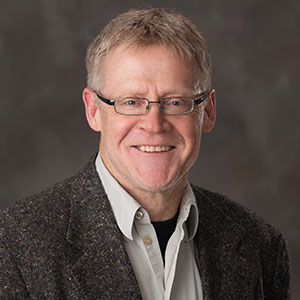
University of Nebraska-Lincoln
534 (Lab) 551B (Chair Office) Hamilton Hall
Lincoln, NE 68588-0304
(402) 472-3533 (Lab)
(402) 472-5645 (Chair Office)
jredepen@unl.edu
Education
Postdoctoral, California Institute of Technology
Ph.D., Colorado State University
B.A., Concordia College
Research Interests
Inorganic synthesis, materials chemistry, nanoscience
Current Research
The research in my group is presently focused on two areas that rely heavily on the synthesis of new materials. One involves the use of electrochemistry to construct magnetic tunneling junctions. The other is focused on the preparation of composite biomaterials. The goal the first project described here is to combine emerging nanofabrication technologies with well-established electrochemical techniques to construct tunneling magnetoresistance devices that exhibit size scales and compositions not obtainable by any other means. There is hope that recent discoveries involving the manipulation of electron spins using magnetoresistance phenomena will be an important evolutionary step in the development of permanent memories, reconfigurable logic, and fast electronics devices.

The level of miniaturization that we can attain in my group is shown in the electron micrograph to the immediate left. This particular nanojunction was constructed by using conventional lithographic techniques, milling by fast atom bombardment (FIB), and then electrochemical plating of nickel onto both sides of the junction while monitoring the ac conductivity across the junction. Note from the length bar in the micrograph that we are able to create structures with dimensions smaller than the wavelength of visible light.
Our second research focus involves the preparation of composite biomaterials comprised of hydroxyapatite (HA) and polylactide. We have shown that HA, the formula for which is Ca5(PO4)3OH, can initiate L-lactide polymerization to produce composite materials in a single step in the absence of solvent or catalyst. HA is nominally the inorganic component of bone.

HA/polylactide composites are among the most important biomaterials being examined for hard tissue replacement. Given the demo-graphic fact that the baby boomers in the US are rapidly nearing retirement, this research is especially relevant to today's society. Shown to the right is a section of porcine cortical bone from which we have removed all collagen, cellular material and possible pathogens. The bone was reconstituted by using the remaining inorganic architecture to initiate lactide polymerization into the pores.
Selected Publications
(1) Preparation and characterization of high surface area, high porosity carbon monoliths from pyrolyzed bovine bone and their performance as supercapacitor electrodes.
Goodman, Paul A.; Li, H.; Gao, Y.; et al. CARBON Volume: 55 Pages: 291-298 Published: APR 2013.
(2) High-performance flexible solid-state supercapacitors based onMnO2-decorated nanocarbon electrodes.
Gao, Yang; Zhou, Yun Shen; Qian, Min; et al., RSC ADVANCES Volume: 3 Issue: 43 Pages: 20613-20618 Published: 2013.
(3) Chemical activation of carbon nano-onions for high-rate supercapacitor electrodes.
Gao, Yang; Zhou, Yun Shen; Qian, Min; et al. CARBON Volume: 51 Pages: 52-58 Published: JAN 2013.